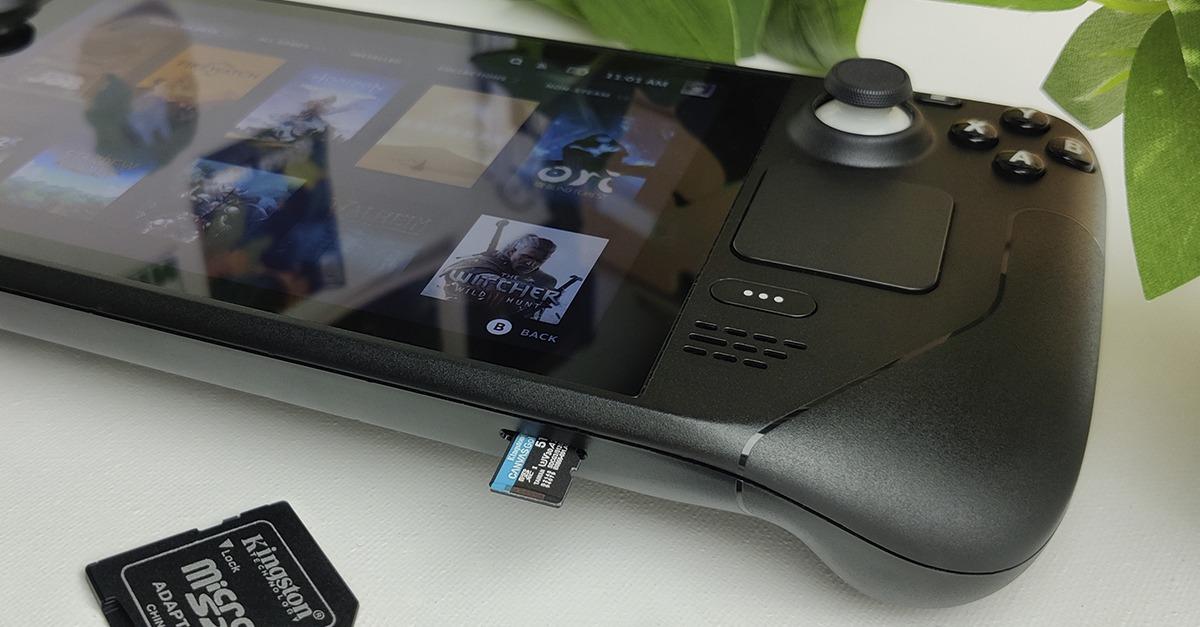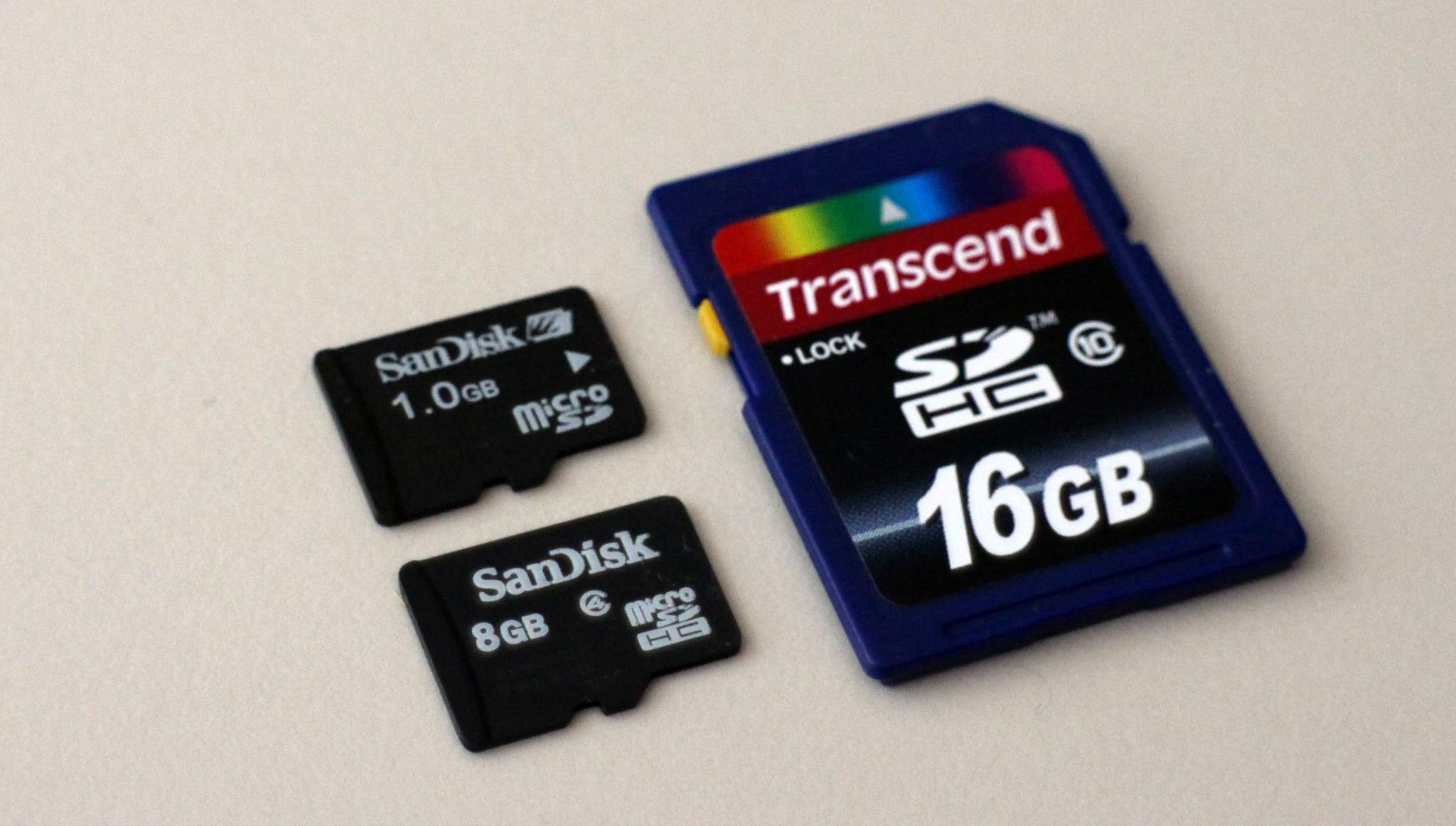- Compatibility: Steam Deck supports UHS‑I SDHC and SDXC; avoids microSDXC.
- Performance: Prioritize high read speeds and Class A2; don't go below Class 10 and V30.
- Capacity: Minimum 256GB; 512GB is the sweet spot for playing from the card.
- Models: SanDisk Extreme, Lexar Professional 1066x and Samsung Pro Plus are safe bets.

If you are thinking of expanding the storage from your Steam Deck with a microSD or even make it your main drive for installing and running games, here you'll find a clear and comprehensive guide. The idea is to help you choose wisely, avoiding overpaying for features the console won't take advantage of and ensuring good loading times.
In addition to recommending specific models with their speeds and capacities, we will review compatibilities, classes, real limits and Tricks of use This way, you can easily decide whether a powerful and balanced card for gaming from the card or a more economical model for secondary storage is a better option.
The essentials before buying a microSD for Steam Deck
Choosing the right one depends on three key factors: compatibility, speed, and price. First, confirm which standards the console supports; second, understand how read and write speeds affect the gaming experience; third, assess the cost per gigabyte and your budget.
With these three points in mind, you can filter through the massive microSD catalog and focus on what really makes the difference on the Steam Deck. Below you'll see how this translates into specific models and capacity recommendations for your case.
Compatibility: What types of microSD cards does the Steam Deck support?
The Steam Deck accepts UHS‑I cards compatible with SD, SDHC, and SDXC. This covers the vast majority of microSD cards on the market, so you'll have no trouble finding suitable options at different prices and capacities.
SDXC formats will allow you to reach up to 2 TB, which is the maximum for these cards. If you need a lot of library installed at once or want to avoid worrying about space, SDXC cards are the natural way to go on the Deck.
Important: microSDUCs are not compatible with the console. If you buy one of these, it won't work, so it's a good idea to check the product information before checking out.
In practice, choosing SDXC UHS-I simplifies your purchase and ensures you get the most out of what the Steam Deck can read through its microSD slot. Now let's move on to the key part of performance: speeds.
Read and write speeds, classes, and what really matters

Reading is important for playing: the higher the reading, the smoother the game loads and scene changes will be. Writing affects most when copying games to the card, downloading, or moving files, so it's noticeable during installation but not as much during gameplay.
On microSD you will see several markings: the Roman numeral for the UHS bus, the classes A1 or A2 for apps and video classes V. Although it may seem like a mess, with a couple of basic rules you'll have it under control.
On Steam Deck, UHS‑I is the supported standard. It's common to see cards labeled I, II, or III to indicate the bus, but the Deck is designed for UHS-I. Still, some microSD cards report very high theoretical reads with proprietary readers, while the console will fall within the UHS-I range.
For apps and games, prioritize class A2 over A1. A2 improves random input and output operations, which is precisely what helps games launch faster and the system better access many small files.
For sustained writing, it is sensible not to go below class 10, and better if it is U3 or V30. This ensures a solid minimum of performance when installing or copying data to the card.
High video classes like V60 or V90 do not add value to the Deck. They're designed for 4K or 8K cameras and capture, and paying extra for them doesn't translate into real improvements on Valve's console.
What speeds can you expect in practice?
Modern UHS-I microSD cards advertise read speeds of around 150, 160, or even 170 MB/s, with write speeds typically in the 90-120 MB/s range on higher-end models. However, keep in mind that the Deck slot limits the usable ceiling, so the gap between fast cards narrows when playing.
Even with that limitation, good brand A2 cards make a difference compared to more basic options. You'll notice faster loading times and a more consistent experience when launching titles directly from the microSD card.
Valve has shared that microSD is the slowest option compared to SSD internal, but it is not far behind. The experience of playing from the card is quite satisfactory, especially if you are coming from the 64GB model or installing a lot of heavy productions.
An interesting fact: previous consoles like PS4 or Xbox One worked with mechanical hard drives that were around 70 MB/s. In that context, a modern A2 microSD can offer a very decent experience for running games from it.
Capacity and price: how much space to choose based on your use
Today's games are constantly growing, and seeing titles over 100 GB is no longer uncommon. If you opted for the 64GB Steam Deck, a microSD card will be almost mandatory so you don't have to keep installing and uninstalling all the time.
As a base, 256GB is a sensible minimum to go with the 64GB model. Now, if you're looking to install multiple AAAs at once and live more peacefully, 512GB offers a much more practical margin.
For those who have the 256 or 512GB Deck and want some extra storage, 512GB on microSD is still a great choice. It allows you to maintain large games and indie libraries without spending all day managing space.
At the high end, 1TB or even 2TB in SDXC are valid options if you don't want to compromise. However, keep in mind that prices vary widely; look for deals to get the best value.
Finally, avoid skimping on very cheap cards that sacrifice essential classes or speeds. A slow microSD card can become a bottleneck for installations and data access, making the overall experience worse and more frustrating.
Classes and symbols: a quick guide to avoid getting lost
UHS in Roman numerals: On the card, you'll see I, II, or III for the bus. The Deck works with UHS-I, so don't overpay for higher-quality buses you won't be using.
A1 vs A2A2 is preferable for games and apps due to its better random performance. If you're torn between two cards with similar performance, choose the A2.
U1, U3 and class 10: These mark minimum sustained write speeds. Don't go below class 10, and if possible, opt for U3 for smoother installations.
Video classes V30 or higher: V30 is sufficient for the Deck. V60 or V90 are for cameras and offer no real benefit on the console.
Real Gaming Performance: What to Expect from MicroSD

Compared to an internal SSD, a microSD will always be slightly slower, but with a good A2 card you won't notice any dramatic differences in most titles. Loading times may increase, yes, but they are still perfectly playable.
Valve didn't detail the card used in its timing estimates, so with faster models it's possible to slightly improve those margins. In real-world testing with modern A2 cards, the experience is consistent and suitable for gaming from the card without issue.
For large catalogs or for those who install and uninstall frequently, the balance between capacity and speed makes the difference. That's why 512GB A2 from a well-known brand is the sweet spot for most.
Case study: What should I choose based on my Steam Deck model?
64GB model- Prioritize at least 256 GB and, if possible, 512 GB A2. You'll gain headroom and speed to run games from the card without constantly moving them.
256GB model: 512GB A2 is ideal to complement the internal SSD with AAA and multiplayer that you use often.
512GB model: A 512GB microSD card for additional storage will allow you to always have your favorite heavyweight titles installed and a good rotation of indie titles.
Quick recommendations by profile
Balanced performance and high capacity: SanDisk Extreme 512GB or 1TB; Lexar Play 1TB if you find it at a good price, making sure it's A2 in 512GB.
Maximum write speed on UHS-I: Lexar Professional 1066x or Samsung Pro Plus for their higher write speeds, very practical for installations and copies.
Tight budget: Samsung EVO Select 512 GB, PNY PRO Elite 256 GB or Kingston Canvas Select Plus, assuming slightly longer installation times.
Featured models and their strengths at a glance
SanDisk Extreme: Very balanced in reading and writing speeds of 90 MB/s; reliable for direct-to-card gaming and with a wide variety of capacities.
SanDisk Extreme Pro: Theoretical reading speeds are up to 170 MB/s, with the same write speed; interesting given that it appears cheaper than other fast microSD cards.
LexarPlay: Great value for money in 512GB and 1TB, with the advantage of high write speeds; avoid 256GB by downgrading to A1.
Lexar Professional 1066x: Very competitive write speed of 120 MB/s, ideal for heavy installations and frequent copies.
Samsung ProPlus: specifications very similar to the Lexar 1066x, with the plus of the reliability usual Samsung and very reasonable prices.
Samsung EVO Select: 130 MB/s read and low cost, practical if you prioritize capacity and don't need maximum write speed.
PNY PRO Elite vs Kingston Canvas Select Plus: Honest, economical alternatives for expanding your space without sacrificing a stable experience.
With all of the above, you now have a clear idea of which standards the Deck supports, which speeds really matter, which capacities are best suited, and which specific models perform well on the console. If you choose an A2 UHS-I card with high read speeds and, ideally, write speeds of 90 to 120 MB/s, playing games from microSD will be as comfortable as it is practical, especially on the 64 GB model.

Passionate writer about the world of bytes and technology in general. I love sharing my knowledge through writing, and that's what I'll do on this blog, show you all the most interesting things about gadgets, software, hardware, tech trends, and more. My goal is to help you navigate the digital world in a simple and entertaining way.